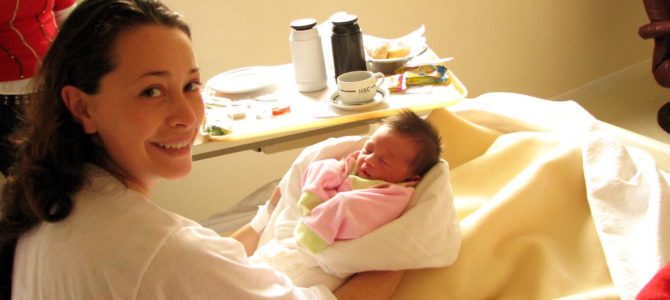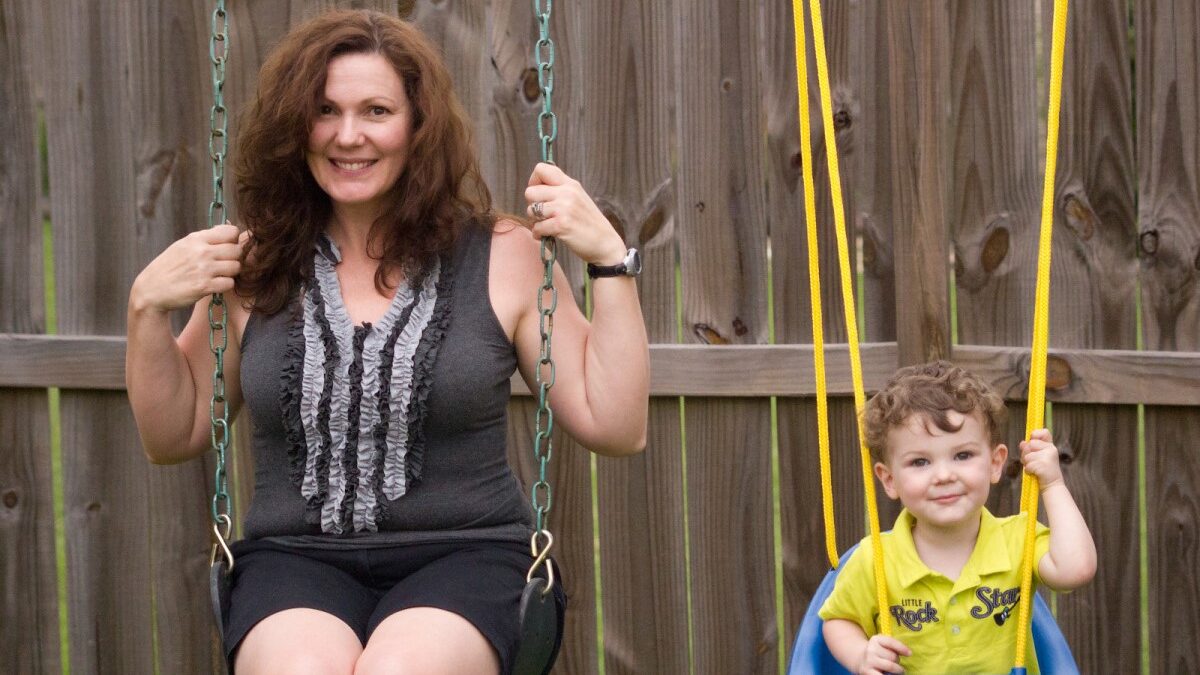
Teens whose mothers worked part-time or not outside the home were significantly more likely to be admitted to and attend a highly selective college or university than teens whose mothers worked full time, finds a study out today from the Institute for Family Studies. The study controlled for external factors including family income, parental education, the child’s sex, race, and family composition.
“Students are more likely to be accepted by and attend highly competitive colleges when their mothers are at home than when their mothers and fathers both work full time,” it concluded. The study examined nationally representative, longitudinal federal data about more than 17,000 American ninth graders.
Forty percent of the children studied had two full-time working parents, 57 percent had two working parents with mom either working full- or part-time, and 24 percent had a father who worked full time and a mother who did not work for pay. The children’s education outcomes were highest with the traditional male breadwinner, female homemaker arrangement. Families in which the father worked full time and the mother worked part-time saw comparably high academic achievement among their children.
“The additional time, energy and attention that stay-at-home-mothers were able to devote to supervising their children’s studies and peer interactions and to participating in school-related volunteer efforts seem to have paid off in terms of their offspring’s academic success,” study author Nicholas Zill said in a statement.
The graph below from the study shows children’s selective college attendance by parental work arrangement. The blue bars are the raw outcomes, and the yellow bars are outcomes adjusted for the demographic information mentioned above (family income, parental education, etc.).

“After adjustment for demographic and socioeconomic factors, the group most likely to attend selective colleges were students in male breadwinner-female homemaker families. The odds that students in this group would attend selective colleges were significantly higher than those for families where both parents worked full time (odds ratio of 1.57),” Zill’s study found. “Students whose fathers worked full time and mothers worked part time also had significantly better odds of attending selective colleges. The breadwinner-homemaker group and the full-time working father/part-time working mother did not differ significantly from each other.”
“Highly-selective colleges” in the study “are those whose first-year students’ test scores placed the schools in the top fifth of baccalaureate-granting institutions.” Such institutions include Ivies and highly competitive state schools such as Princeton, the University of California at Los Angeles, Stanford, and Duke.
Also significantly, children whose mothers did not work outside the home achieved at an elite level even though their family income was a median $20,000 less per year than the families in which the mother worked either full or part time. In the study, the families in which both parents worked full time earned the most money (median income $80,000), but parental attention outperformed money at securing children’s education prospects.
Big Societal Benefits When Moms Don’t Have to Work
Research going back decades finds other significant family and public benefits when people, especially mothers, work part-time or not for pay instead of in full-time paid employment. The 2000 bestseller “Bowling Alone,” for example, included original research and summarized other research that finds women who work part-time are significantly more likely than both full-time paid female employees and full-time homemakers to invest time into their communities.
“Women who work part-time, especially those who do so by choice, volunteer more, entertain more, and visit more with friends more than do full-time employees or full-time homemakers,” writes author and sociologist Robert Putman. Volunteering has an obvious social benefit.
The rest of the book also explains why “private” social behaviors such as visiting with friends and inviting people over for dinner are crucial to a well-ordered society. It’s because people are happier and function better when they have strong friendships. Isolated people are more likely to create problems such as idleness, ill health, addiction, and violence that they ultimately force other people to solve, typically through expanded government programs.
Twenty years ago, “Bowling Alone” found massive reductions in community engagement since the 1950s and attendant increases in social disorders that stem from loneliness. The biggest contributor to plummeting relationships in America, Putnam found, was Americans’ screen addictions — then largely television, now mostly our cell phones. Another major factor, however, accounting for up to 15 percent of the massive drop in social connectedness in America, was the increase in full-time working mothers, both single and married.
Women Want Possibilities For Less Employment, Not More
Contrary to the reigning narrative that women want to live similarly to men by investing their major energies into full-time paid employment, Putnam found “virtually all the increase in female employment over the last two decades of the twentieth century was by necessity, not by choice.” Further, “Women who must work full-time are the least likely to visit with friends, to entertain at home, or to volunteer” (emphasis added in both quotes).
While politicians of both major parties focus largely on making it more possible for mothers to work full time away from their children through redistributing taxpayer money into programs such as paid leave, a substantial portion of working mothers work more than they want to. Many would prefer to invest more attention into their families and communities. Lots of working moms feel trapped, and most politicians promise to throw a pillow into the cage rather than opening its doors to set women free to better balance relationships and money.
As Putnam noted 20 years ago, “We found that part-time workers are typically more involved in community activities than either full-time employees or people who are not employed at all. Not everyone wants a part-time job, of course, but many do, and America’s public, nonprofit, and private institutions have only begun to address the challenge of restructuring work to meet that demand.” This situation hasn’t measurably improved since.
Kids Need and Want Their Moms’ Attention
Research also confirms the obvious fact that receiving lots of their mothers’ attention is crucial for children’s development. As Erica Komisar writes in 2017’s “Being There,” “the most recent research has shown that a mother’s unique presence is critical to the emotional development and mental health of her children in their early years.”
It’s not just the early years where a mother’s presence is important to children’s growth, either. A Stanford University study of 66,000 children in Norway found that an increase in stay-at-home parents for older children increased their academic achievement. While early childhood is obviously a crucial time for emotional and brain development, so are, say, the middle school years.
Children simply need their parents, no matter their age, and benefit from increased parental attention. This isn’t rocket science. Anyone could tell you this. The reason more people don’t is that it has become a political statement to say the obvious, because some people and factions are financially, emotionally, socially, and politically invested in separating parents from children. Thus the manufactured social pressure for women to turn off their instincts to nurture and tie sex to marriage.
There’s more tax and lobbyist money to be made on subsidized daycare and dual incomes, after all. At least until increasingly parent-deprived generations of children accumulate less and less emotional and intellectual capital to power our economy and society. That is already happening, but it doesn’t have to continue.









